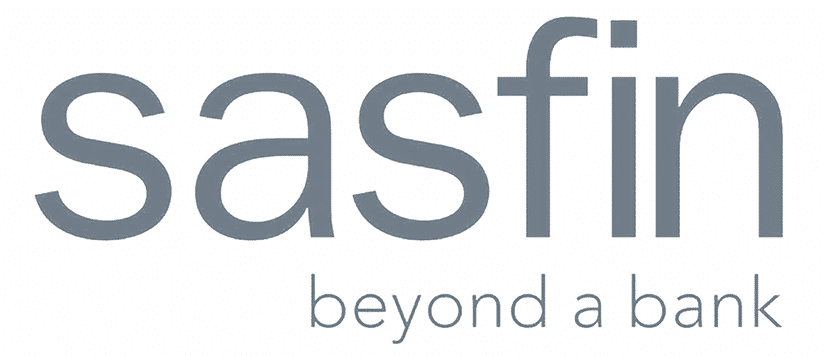Trust is the currency of finance. Whether you’re a bank, an investment firm, a fintech provider, or an insurance services provider, your reputation is everything when it comes to your bottom line. In a business as scrutinised and overseen as aviation, Strategic Communications is not a department—it’s a mission-critical strategy. It influences a client’s perception, instils confidence in clients, and enhances trust in turbulent markets, regulatory headwinds, and changing consumer needs.
Financial Services is about more than just press releases and media hits. It is the strategic storytelling, regulatory communication, crisis management, thought leadership, and digital engagement that must be custom-tailored for a sector in which public trust must be earned and defended every day. Banks are expected to be transparent and accountable, and PR professionals must distil complicated financial facts and figures into clear, accurate, and compelling messages.
The Role of Public Relations in Financial Services
When it comes to communicating value, reputation management, and transparency, public relations (PR) is a vital function in how financial services firms communicate. In a field where jargon can be baffling to or alienating for clients, PR serves as the connective tissue between a technical, financial lexicon and public comprehension.
For banks, investment companies, credit unions, insurance companies, and fintechs, Strategic Communications helps build a brand identity and establishes how the services can differentiate the company in a competitive market. This might be the introduction of a new product, delivering quarterly earnings, or communicating a change in the economic landscape, but financial brands are heavily dependent on PR teams to ensure that messaging is up-to-date, factual, and meets client expectations.
Additionally, thought leadership cannot be achieved without the process of Public Relations. PR builds authority and trust by establishing executives and analysts as industry authorities through op-eds, media interviews, webinars, and speaking engagements. This is especially true in finance, where knowledge and trustworthiness are key factors in decision-making for customers and investors.
Effective PR also reinforces internal communications, promoting complete transparency with employees, stakeholders, and shareholders. It ensures that everyone is aware of the company’s values, direction, and how external challenges are being addressed. In brief, Strategic Communications is the voice and shield of financial brands, speaking louder with success and defending against adverse comments.
Unique Challenges of Public Relations in Financial Services
PR has value across industries, but is particularly complicated in finance. Despite heavy restrictions, market sensitivity and consumer scepticism mean every message is high stakes. Misinterpretation or violation of the rules can result in fines, court action, or public distrust. This is why financial Public Relations must be accurate, compliant, and transparent.
The regulatory landscape is one factor, among others. Financial services, on the other hand, are regulated by organisations such as the SEC, FINRA, and the FCA, among others, depending on the jurisdiction. Every single press release, blog post, or public comment must satisfy disclosure rules, advertising guidelines, and data protection regulations. PR professionals need to be closely aligned with legal and compliance teams to ensure they meet regulatory requirements in all their work.
The second is that financial crises — whether firm-specific or industry-wide — can rapidly destroy a reputation. Whether it’s a cyber hack or a global recession, PR teams need to be ready to respond to crises, minimise damage, comfort investors and reinstate trust. The safety buffer margin in PR is relatively small. There is not much time to fine-tune – delays, halting or vague messages will only make matters worse!
Third, the public has been sceptical of financial institutions, particularly in the aftermath of events such as the 2008 financial crisis. Consumers want transparency, accountability and ethics. PR pros must develop messaging that humanises financial brands, conveys empathy, and builds goodwill over the long term, rather than spin or overpromise
Key Public Relations Strategies for Financial Institutions
Faced with this high-trust, high-regulation environment, financial institutions must develop a proactive, carefully structured public relations approach to succeed. Below are some building blocks of successful PR in the industry:
Media Relations: Establishing good contact with journalists and financial media is crucial. Developing proactive story pitches and a pipeline of expert commentary, along with a rapid response to media inquiries, makes the institution a go-to source.
Thought Leadership: Along these lines, publishing white papers, bylined articles, and/or hosting webinars share insights and build credibility for financial firms. This can include sharing their insights on market trends, fintech innovations, and the economic outlook.
Content Strategy: A strong content strategy involves creating blogs, infographics, videos, and newsletters to effectively communicate your services, break down complex products, and keep clients informed. Educational content in financial Strategic Communications helps to build brand trust.
Crisis Communication: A crisis response plan should be a central component of any financial public relations program. It details who speaks, what is written, and how we use tools like the press, social media, and internal channels in a time of crisis.
Social Media Engagement: Financial institutions tend to be more cautious when it comes to social media, but LinkedIn, X (formerly Twitter), and YouTube are excellent venues for B2B conversations and thought leadership. A clear and consistent tone ensures brand authority is always at a premium.
Stakeholder Communications: Ongoing communication to shareholders, employees, and regulators ensures transparency. Financial Public Relations: Annual Reports, ESG and How Town Halls Fit In.
Measuring Success in Financial Public Relations
In data-driven sectors such as finance, demonstrating the value of Public Relations is vital. Success isn’t just about media mentions — it’s also about reputation, engagement, and business results.
Media Monitoring and Sentiment Analysis: Monitoring media coverage, share of voice, and sentiment helps PR professionals determine how their brand is perceived. Meltwater or Cision can track the quality and tone of coverage.
Message Consistency and Brand Alignment: Ensure PR assets are on-brand and aligned with messaging pillars to maintain consistency across campaigns. Mixed messages can be confusing or push people away.
Effectiveness Crisis Response – How fast and effectively did the PR team respond in situations like a data breach or market drop, to evaluate preparedness and impact control?
Thought Leadership Impact: If speaking engagements, media quotes, and article placements are materialising into increased visibility, social sharing, or requests for additional perspective, these are indicators that thought leadership has some traction.
Lead Generation/Conversion: PR initiatives that incorporate broader marketing efforts can be connected to website traffic, event registration, and client inquiries. PR is rarely the front-runner, but it is an enabler that helps people buy from you.
With these KPIs in place, financial PR teams can refine their strategies, demonstrate return on investment (ROI), and enhance their contributions to the bottom line.
Conclusion
In a sector based on trust, authenticity, and adherence to strict guidelines, PR is not nice to have – it’s a necessity. Strategically executed as part of a financial services firm’s marketing machine amid market changes, regulatory pressures, and client demands, Public Relations offers the visibility, insulation, and placement you need to stand out.
PR in the field of financial services is not a matter of splashy ads or empty rhetoric. It’s translating complex concepts into clear communication, it’s responding to crises with transparency, and it’s showing stakeholders — clients, investors, regulators, and the public — that your organisation represents stability and values integrity. Proactive media relationship building, thought leadership, and a commitment to transparency are how financial PR reputations (lasting longer than the latest news cycle) are established.
GET IN TOUCH WITH THE DIGITAL SCHOOL OF MARKETING
Do you want to become a digital public relations expert with the Digital School of Marketing? If you do, you must do our Digital Public Relations Course. Follow this link to find out more.
Frequently Asked Questions
Financial services Public Relations is the discipline of managing communication between a financial services firm (including asset managers, hedge funds, investment bankers in M&A, prime brokers, etc.) and its stakeholders – for example, customers, staff, suppliers, regulators, and the public. This encompasses media relations, crisis communications, investor updates, and thought leadership programs.
Strategic Communications is the lifeblood of financial institutions, as it helps develop and protect their core asset – trust. Financial services is a complex industry that is highly regulated, so clear, conversational communication is critical. Public Relations practitioners assist in guiding public opinion, mitigating reputational risk, and ensuring the institution’s messaging aligns with the law and its code of ethics. They are also helpful in humanising a brand, positioning a company as a thought leader, or addressing an issue — such as market volatility or a data breach — that is sensitive.
For the financial services industry, those crises can run a gamut, from data breaches and compliance breakdowns to economic downturns or an uncooperative executive. These events are managed with the support of your Public Relations teams – critical to coordinate, communicate and do so in a timely, honest and accurate manner. They write press releases, speak with reporters, monitor public sentiment, and provide talking points to fellow staffers. When a crisis occurs, the role of PR should be to mitigate any damage to its reputation, reassure customers and regulators, and demonstrate accountability.
Best Public Relations plans for financial brands Include Media outreach, thought leadership, education, crisis planning, and stakeholder connections. Financial PR is about transparency, adherence, and trust. This includes taking complex financial information and breaking it down in an easily digestible way, positioning executives as authorities, and utilising platforms like LinkedIn or industry events to increase visibility. Public Relations encompasses not only those quarterly communications but also the way you address the press during market moments and the level of transparency you maintain.
In its support of investor relations, Public Relations must ensure that all external communications are timely, accurate, and consistent with the company’s brand. From the press release to the annual report, PR teams collaborate with investor relations to craft messages that meet shareholder expectations and comply with regulatory requirements. It also safeguards confidence during market risk by providing timely updates. Media coverage, executive interviews, and strategic messaging are among the ways PR supports a company’s financial integrity and its long-term vision, both of which are critical components in establishing and maintaining investor confidence.
.
Small financial companies utilise PR to enhance their visibility, credibility, and trust in a highly competitive industry. A targeted PR strategy enables them to punch above their weight in demonstrating expertise, promoting new services, and nurturing relationships with local media. Public Relations also assists smaller organisations, particularly in navigating legal frameworks, mitigating reputational risk, and setting themselves apart through compelling content and narrative. At a time when few companies have much to spend on marketing, PR can be a great return on investment when it comes to leveraging your earned media and thought leadership.
Blog Categories
You might also like
- Use the Zero Moment of Truth to Benefit your Social Media Marketing
- Your Complete Guide to PPC Marketing Basics. Find out more.
- You Can Convey a Lot Of Meaning With Just One Graphic
- Would you make a great marketing manager?
- Win with Bona Magazine and the Digital School of Marketing
- Win a Digital Marketing Course Valued at R12 000





















